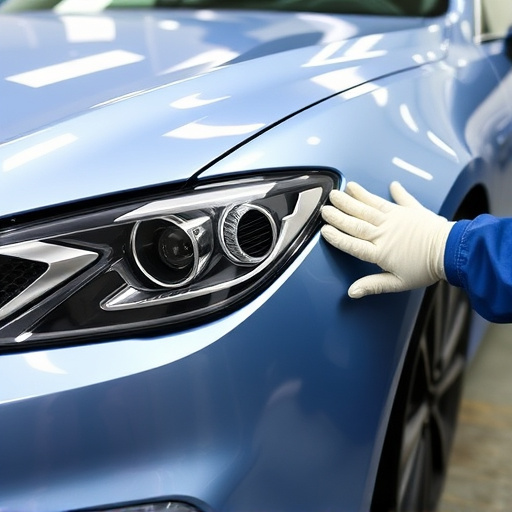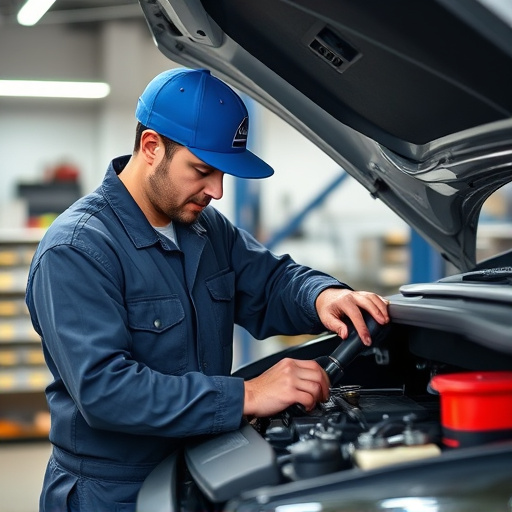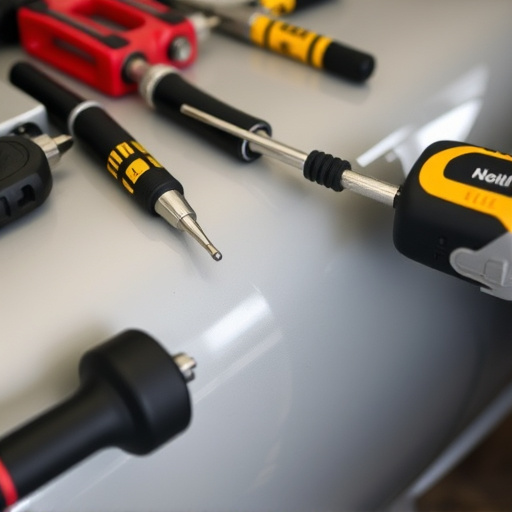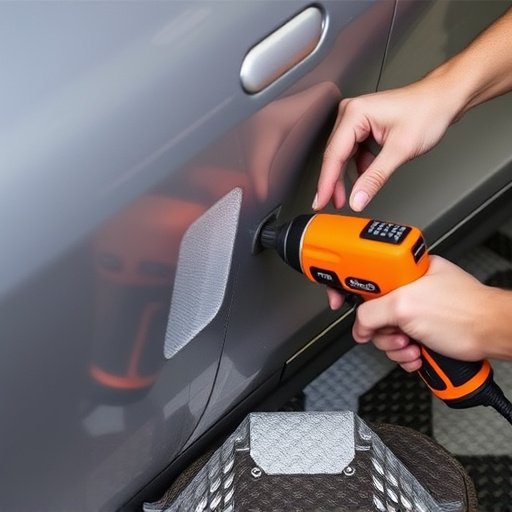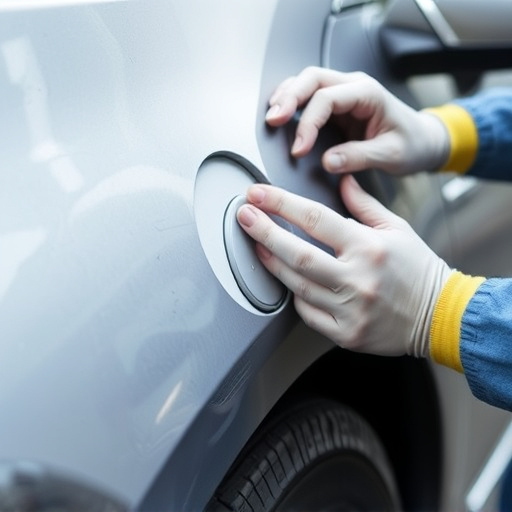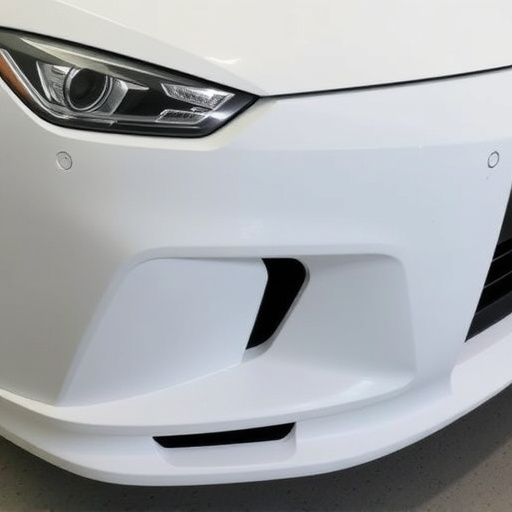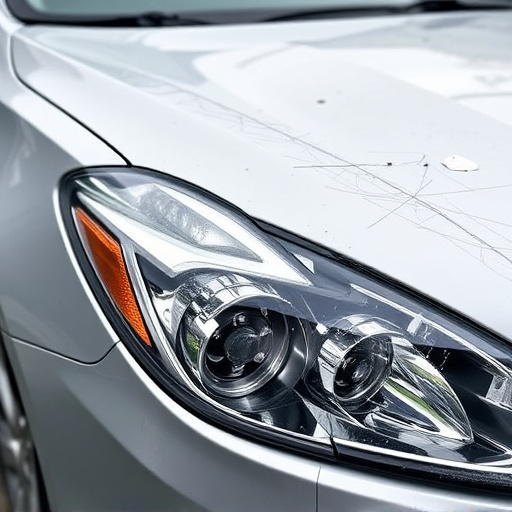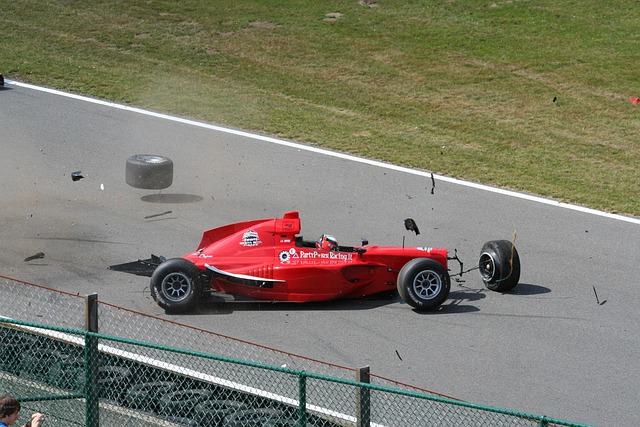Tesla hail damage repair demands a meticulous, multi-step process. Skilled technicians conduct thorough inspections, map each dent and crack with specialized tools for accurate documentation, ensuring factory-like finishes that meet Tesla's high standards. This precise dent mapping is crucial for tailored repairs, cost efficiency, and satisfying restoration experiences.
Tesla vehicles, renowned for their cutting-edge technology and sleek design, are susceptible to hail damage like any other car. When your Tesla sustains such damage, a thorough dent mapping process is crucial for effective repair. This article delves into understanding Tesla hail damage, highlighting why dent mapping is essential in the repair process. We also offer a step-by-step guide to ensure efficient restoration of your Tesla’s original condition, focusing on precise and professional Tesla hail damage repair techniques.
- Understanding Hail Damage on Tesla Vehicles
- The Importance of Dent Mapping in Repair Process
- Step-by-Step Guide to Efficient Hail Damage Restoration
Understanding Hail Damage on Tesla Vehicles

Hail damage on Tesla vehicles can range from small, inconsequential dents to severe, structural deformities. Identifying and understanding the extent of the damage is crucial for effective Tesla hail damage repair. The process begins with a thorough inspection, where skilled technicians meticulously map each dent, crack, or scratch. Using specialized tools and expertise, they document the exact locations and sizes of all impacts, ensuring no detail goes unnoticed. This detailed mapping not only aids in the repair process but also plays a vital role in achieving a factory-like finish that matches Tesla’s high standards.
Compared to other luxury car brands like Mercedes Benz collision repair services, Tesla hail damage repair requires unique considerations. While auto body shops skilled in dent removal for various vehicles can handle basic repairs, complex or extensive hail damage on Teslas might demand specialized knowledge and equipment. This is because Tesla models have intricate designs and advanced materials that necessitate precision and care during the restoration process, ensuring the vehicle retains its original aesthetics and safety features.
The Importance of Dent Mapping in Repair Process

The process of dent mapping is a critical component of Tesla hail damage repair. It involves meticulously documenting and mapping each and every dent or damage present on the vehicle’s surface. This detailed assessment plays a pivotal role in determining the extent of the repairs needed, ensuring precision and accuracy throughout the restoration process.
Accurate dent mapping allows automotive repair specialists to provide tailored solutions for car bodywork services. By precisely identifying each dent, they can offer effective collision repair services, restoring the vehicle to its pre-hail damage condition. This meticulous approach not only guarantees top-quality repairs but also helps in managing costs and expectations, making Tesla hail damage repair a smoother and more satisfying experience for vehicle owners.
Step-by-Step Guide to Efficient Hail Damage Restoration

Hail damage on Tesla vehicles requires a meticulous approach to restore their original condition. Here’s a step-by-step guide for an efficient hail damage restoration process:
1. Initial Inspection: Begin by thoroughly inspecting the vehicle for each and every dent, crack, or scratch caused by hail. Utilize high-resolution photography to document the extent of the damage, ensuring you capture all angles and sizes of dents. This detailed record will be crucial for insurance claims and future reference.
2. Dent Mapping: Create a comprehensive map of the dents, noting their locations, shapes, and depths. This process involves using specialized tools to measure each dent precisely. Accurate dent mapping is essential for estimating repair costs and ensuring every imperfection is addressed during the repair stage.
3. Removal of Hail Damage: Depending on the severity of the damage, there are several techniques employed: from manual popping of smaller dents with air pressure to more complex methods using specialized equipment. The goal is to return the panel to its original shape while minimizing scarring and ensuring structural integrity.
4. Auto Body Shop Expertise: After removal, the dented panels require careful preparation and painting. This step demands the skills of an experienced autobody shop technician who understands Tesla’s unique automotive restoration process. They will ensure the paint job matches the vehicle’s original factory finish, blending seamlessly with the rest of the car.
5. Final Touches: Once all panels are repaired and painted, a final inspection is conducted to guarantee satisfaction. This includes checking for any signs of residual damage or uneven finishes. The goal is to restore the Tesla to its pre-hail condition, ensuring it drives as good as new.
Tesla hail damage repair is a meticulous process, and dent mapping plays a pivotal role. By accurately identifying and documenting each dent, technicians can ensure a precise restoration that matches the vehicle’s original condition. Following a detailed step-by-step guide facilitates efficient hail damage restoration, guaranteeing both quality and customer satisfaction in the repair of Tesla vehicles affected by severe weather events.



